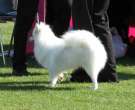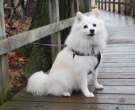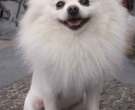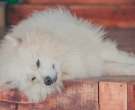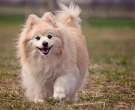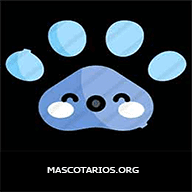The Vizsla or Hungarian Braco It is a breed of dog originating in Hungary.. It is one of the best sporting and companion dogs, but little known outside his native Hungary.
The Vizsla was already known from the beginning of Hungarian history. The ancestors of today's Vizsla were the trusted hunting dogs and favorites of the Magyar tribes who lived in the Carpathian Basin in the 10th century.. There are primitive prints in stone - thousand years- It shows a Magyar Hunter with his Falcon and his Vizsla. The first written reference to the Vizsla breed was recorded in a chronic illustrated of the year 1357.
They were the companion dogs of royalty and barons early in the war, for which reason, the blood of the Vizsla has preserved its purity for centuries. The landed aristocracy jealously guarded them and encouraged the development of their hunting ability.Yellow pointer”. Records of letters and writings from the time show the high esteem in which Vizsla dogs were held..
The Vizsla, in spite of hard historical times which became, he survived the Turkish occupation (1526-1696), to the Hungarian Revolution (1848-49), the first and second world war, and the Russian occupation. But, was several times on the verge of extinction... In the year 1800 in Hungary the population of specimens of English Pointer and German Shorthaired Pointer, because they were more accessible to the entire population, This action, took them for the first time, on the verge of extinction, and then, the other nearest point was after World War II, when they thought they really..., they had disappeared.
Then, in Hungary a national survey of sports hunters was carried out, and the results revealed that only a dozen purebred Vizsla dogs had survived the debacle and were living in the country. From these copies, the race came to fame once more, After carrying out a thorough programme of recovery of the race. Outside of Hungary, Vizsla are commonly bred in Romania, Austria, Slovakia and Serbia.
The Vizsla at reached United States at the end of World War II and as the interest and devotion to the race was on the rise, the owners formed the Vizsla Club of America in order to obtain official recognition of the breed by the AKC to, took place the 25 in November of 1960.
The Vizsla was used in the development of other races, as of the Weimaraner, of the Vizsla hair hard and Braco German for short hair. There is considerable controversy regarding the races that, along with other Pointer breeds, were used to reestablish the Vizsla breed at the end of the 19th century. In any case, the similarity between the three races is undeniable…
The Vizsla is a medium-size of short hair dog, and elegant porte, light structure, with well defined muscles, that share physical characteristics with the Weimaraner or Weimaraner. Frequently confused them with dogs of other breeds such as, Redbone Coonhound, Braco of Weimar and the Rhodesian Ridgeback. Although with the races that closest thing it has is with Redbone Coonhound, the Weimaraner, the Vizsla is, As we said, the muscles are more defined and it is thinner than the aforementioned breeds.. The males measure of 56 to 63 cm. of height to the cross and weigh in 20 to 30 kg; the females measure of 53 to 61 cm. of height to the cross and weigh 18 to 25 kg. The Weimar Braco and Rhodesian Ridgeback are larger.
The nose of the Vizsla always has a reddish color that is mixed with the standard colour of the fur, It consists of different shades of the color solid oro-óxido (copper, brown, Golden reddish and Golden dark sand). The color of the eyes and nails should also mingle with the color of the fur (if the latter is not fulfilled, then we would talk about another race).
Some variations in the Vizsla's coat color may show markings along its back.Saddle’, is typical of the breed and for that reason, It is often confused with Rhodesian Ridgeback.
According to him American Kennel Club (AKC) and their standard of the breed, the Vizsla must have short hair, smooth, dense and glued to the body, without woolly subpelo. The Vizsla is not an animal prepared to live outdoors due to the absence of double layer, which leads them to be more susceptible to cold and intense heat. They are very clean dogs, they do not need to be bathed often, do not usually give off the characteristic “odor to dog” detectable by humans. After their forays into lakes and rivers they will develop a scent that is a very faint version of the "wet dog" scent.. A quick bath and the odor will vanish.
The Vizsla is a natural Hunter endowed with an extraordinary sense of smell, comparable to the Pointer and an above-average learning ability. Although they are encouraged, kind, emotional and sensitive, they are equally intrepid and have a well-developed protective instinct. Its hunting style is near, laceando without moving away from the Hunter hunting for the hand. They hunt in terrain, they are very versatile, and they can hunt all kinds of parts, either hair or feather. They are very athletic and resistant. Its recovery capacity is high, charge very well and can train you very easily.
Not only are large crawlers, but also, excellent collectors. Both on Earth and since water that, they are very good swimmers. Like all dogs hunting, the Vizsla require a good deal of exercise to stay healthy and happy. He is very intelligent and likes to feel challenged and stimulated, both mentally and physically. That is why they need training according to their characteristics, sweet, consistent and dedicated.
The Vizsla is a very energetic dog, soft and delicate manners, fair, loving and very warm. They often form close bonds with their owners, including children, that is why sometimes, they are nicknamed "velcro dog” due to his loyalty and affection, far from being lap it is always close to his master. They are quiet dogs, They ladrarán only if necessary. Many sleep in bed with their owners and, If they are allowed, They shall always endeavour to make a huequito under the sheets.


